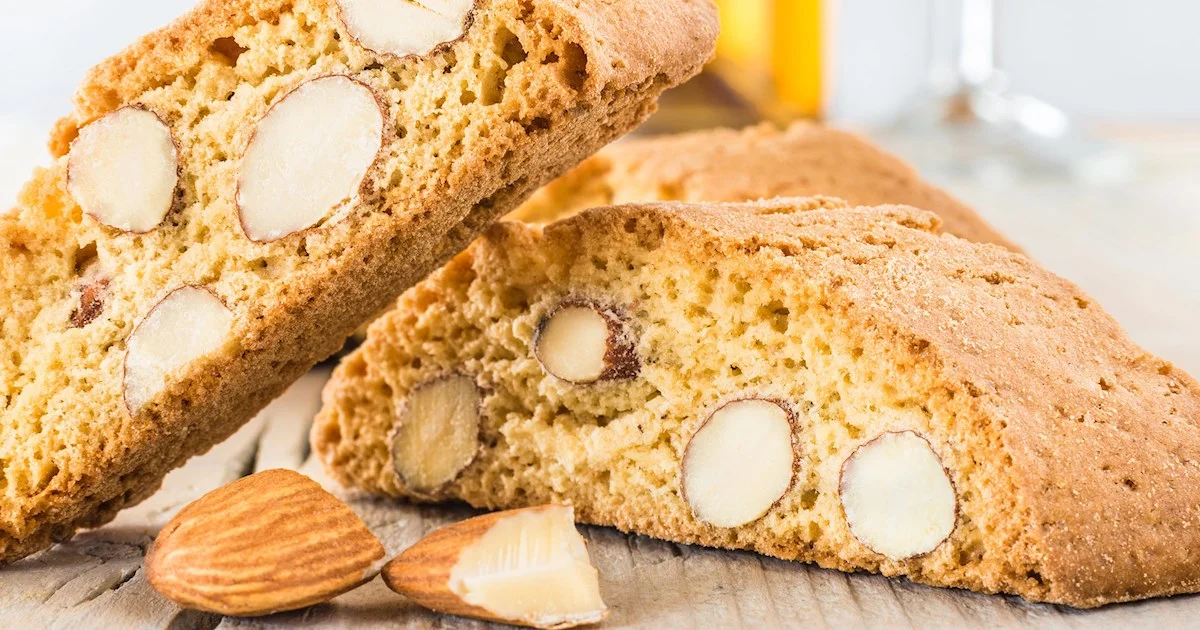When it comes to Italian desserts, few are as iconic and timeless as бишкоти ди прато—better known internationally as Biscotti di Prato. These twice-baked almond cookies from Tuscany are more than just a treat; they are a piece of culinary history that has traveled the world. From the streets of Prato to modern cafés, their crisp bite and nutty flavor continue to enchant food lovers everywhere.
1. What Exactly Is Бишкоти ди Прато?
Бишкоти ди прато refers to a traditional Tuscan almond biscuit that has become a symbol of Italian pastry culture. The term itself translates to biscuits of Prato, after the town where they were popularized.
Unlike many cookies, biscotti are twice-baked, which gives them a hard, crunchy texture. This makes them perfect for dipping in coffee, tea, or, most traditionally, a glass of Vin Santo, Tuscany’s sweet dessert wine.
Key characteristics of бишкоти ди прато include:
-
Simple ingredients: flour, sugar, eggs, and whole almonds.
-
No added fats: unlike modern cookies, there’s no butter or oil in the authentic recipe.
-
Long shelf life: because they are baked until dry, they can last for weeks without losing quality.
This simplicity makes them both rustic and elegant, appealing to anyone who appreciates genuine Italian flavors.
2. The History of Бишкоти ди Прато
The origins of бишкоти ди прато trace back to ancient times. The word biscotti comes from the Latin biscoctus, meaning “twice cooked.” Roman soldiers carried similar biscuits on long campaigns because they were durable and portable.
The modern version, however, is linked directly to the Tuscan town of Prato. In 1858, pastry chef Antonio Mattei opened a bakery there and perfected the recipe that became the gold standard for бишкоти ди прато. His biscuits, made only with flour, sugar, eggs, almonds, and pine nuts, won recognition at the Paris Exposition in 1867.
To this day, Mattei’s bakery—Biscottificio Mattei—remains a must-visit in Prato. Locals and tourists alike buy the signature blue packages filled with crunchy almond biscotti. This bakery preserved the authenticity of бишкоти ди прато while inspiring countless variations across Italy and beyond.
3. The Authentic Recipe and Baking Process
Making бишкоти ди прато may seem simple, but its charm lies in the methodical process.
Core Ingredients:
- Flour
- Sugar
- Eggs
- Whole unpeeled almonds (sometimes pine nuts are added)
Noticeably, there’s no butter or yeast, which sets them apart from softer cookies.
Traditional Method:
- A firm dough is prepared by mixing eggs, sugar, and flour, with almonds folded in whole.
- The dough is shaped into long logs, called filoni, and baked until slightly golden.
- The baked loaves are sliced diagonally while still warm, forming the signature oblong pieces.
- The slices are placed back into the oven for a second baking, ensuring the dry, crunchy texture.
This double-baking method makes бишкоти ди прато incredibly crisp—ideal for dipping without falling apart.
4. Taste, Texture, and Pairings
What does бишкоти ди прато taste like? Imagine a lightly sweet, nutty crunch with a rustic simplicity that pairs perfectly with beverages.
- Texture: Firm, crunchy, and dry—but not bland.
- Flavor: Balanced sweetness with roasted almond notes.
- Experience: Best enjoyed when dipped in a drink to soften slightly before each bite.
Traditional Pairing:
Vin Santo — the classic Tuscan dessert wine. The sweetness of the wine complements the almond flavor and softens the crunch.
Modern Pairings:
- Espresso or cappuccino
- Black tea or herbal infusions
- Hot chocolate
- Even dessert recipes—crumbled бишкоти ди прато makes a wonderful topping for ice cream, yogurt, or layered parfaits.
This versatility is part of what has made them popular worldwide.
5. Cultural Significance of Бишкоти ди Прато
In Tuscany, бишкоти ди прато is not just food—it’s tradition. It’s served at family gatherings, festive occasions, and local cafés as a symbol of hospitality.
The biscuits also carry a sense of regional pride. While many Italian regions produce their own variations of biscotti, true бишкоти ди прато are deeply tied to Prato’s heritage.
Biscottificio Mattei has become a cultural landmark, keeping alive Antonio Mattei’s recipe for more than 160 years. Today, the blue paper packaging of Mattei’s biscotti is almost as iconic as the biscuits themselves.
Beyond Tuscany, бишкоти ди прато has traveled the world, often adapted with modern twists—but the original remains a culinary treasure recognized by food enthusiasts globally.
6. Modern Variations and Global Popularity
Though the original recipe is timeless, modern bakers have introduced creative twists to appeal to new tastes. Some popular variations of бишкоти ди прато include:
- Pistachio biscotti – for a vibrant green color and nutty twist.
- Hazelnut or walnut versions – replacing almonds for different flavor profiles.
- Chocolate-dipped biscotti – a luxurious modern take.
- Citrus-flavored biscotti – using orange or lemon zest for added aroma.
- Dried fruit additions – such as cranberries, raisins, or apricots for a softer chew.
In many countries, biscotti has become a coffeehouse staple, often marketed as a sophisticated companion to espresso. While not all international versions follow the strict Tuscan recipe, the spirit of бишкоти ди прато continues to inspire bakers worldwide.
Conclusion
Бишкоти ди прато represents everything beautiful about Italian cuisine—simplicity, tradition, and the joy of sharing food. From its humble origins in Prato to its global recognition today, this crunchy almond biscuit has stood the test of time.
Whether dipped in Vin Santo, paired with a morning coffee, or reimagined with modern flavors, бишкоти ди прато remains a beloved dessert that connects past and present.
If you’re looking to taste a piece of authentic Tuscany, start with a bite of these golden, twice-baked treasures—you’ll discover why they’ve been cherished for centuries.








